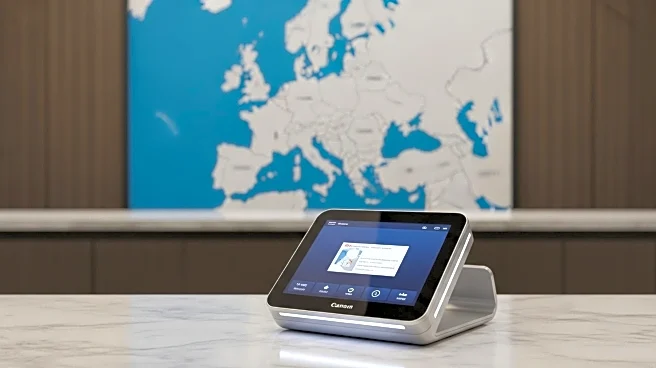What is the story about?
What's Happening?
The European Union is set to introduce a new digital Entry/Exit System (EES) on October 12, impacting Australian travelers heading to Europe. This system will replace the traditional manual passport stamping process with a fully electronic method aimed at enhancing border security and monitoring visa-free stays. Non-EU nationals, including Australians, will be required to create a digital record upon their first entry into the Schengen Area, which includes 29 countries such as France, Italy, and Germany. The registration process involves submitting fingerprints, a facial photograph, and answering standard entry questions. Once registered, the digital profile will be valid for three years, allowing for quicker processing on subsequent visits. However, the initial rollout is expected to slow processing times as officials adapt to the new system.
Why It's Important?
The implementation of the EES is significant as it represents a major shift in how the EU manages its borders, particularly for non-EU travelers. This change is expected to streamline the monitoring of visa-free stays, potentially reducing illegal overstays and enhancing security. For Australian travelers, this means adjusting to new entry procedures, which could initially lead to longer wait times at borders. The system's introduction also highlights the EU's commitment to modernizing its border management processes, which could influence other regions to adopt similar technologies. The impact on travel agencies and airlines could be substantial, as they may need to update their systems and inform travelers about the new requirements.
What's Next?
The EES rollout will begin on October 12, with full implementation expected by early 2026. During this period, travelers and border officials will need to adapt to the new system. It is anticipated that as the system becomes more familiar, processing times will decrease. The EU will likely monitor the system's effectiveness and make adjustments as needed. Travelers are advised to prepare for potential delays and ensure they have all necessary documentation ready for the new digital registration process.
Beyond the Headlines
The introduction of the EES could have broader implications for global travel, as other regions may consider similar systems to enhance border security and streamline entry processes. This move also raises questions about data privacy and the handling of biometric information, which could become a topic of discussion among privacy advocates and policymakers. Additionally, the system's success could influence future EU policies on immigration and border control.
AI Generated Content
Do you find this article useful?














